Prairie Sentinels – Flaxcombe Saskatchewan
Today we visit the lone grain elevator in Flaxcombe Saskatchewan. In the past there were a number of such structures in the community, but this is the last one. It’s a rare beast, here, and especially so when taken in the scope of the entire province – it’s one of some four hundred-ish like it still standing, down from a high of several thousand not all that long ago. Grain elevators and Saskatchewan are synonymous…well at least there were. Last used commercially some decade and half ago, it’s now owned by a local farmer, its function, a place to store his grain. It sits along a sleepy railway line, a bit set back from the tiny town.
Flaxcombe, far eastern Saskatchewan, was founded in the early 1910s concurrent with the arrival of the railway. Always a quiet little burg, it’s said to be home to some hundred people today (looking around, that strikes us as a little high). It’s bisected by a busy high, but no one takes time to stop here, there’s no real reason to…well unless of course you want to photograph the elevator that is. The railway here still runs, now and then.
The elevator was completed in 1957. As was typical, it is wood-cribbed, built of two by sixes laid flat and stacked, following a pretty standardized plan used by the industry. It looked just like almost every other grain elevator out there, those dating back to the 1910s and 1920s, and others built right up until the 1980s. In that sense it was unremarkable. Still, it’s relatively modern in terms of age.
In around 1980, a large wood annex addition was built beside the structure increasing its storage capacity several fold. An annex, often wood, but sometimes in the form of steel bins, was a quick, easy and very common way to expand an elevator’s capacity. Most such buildings, at one time or another, got one or more of these additions. With that, they could load more grain cars in Flaxcombe than they did in the past, not fives and tens but several dozen at a time. Machinery upgrades were all put in place at the same time, allowing for faster processing.
The building, from new until closing belonged to the Saskatchewan Wheat Pool. A farmer owner cooperative it was traditionally the largest grain handling firm not just in the province but the entire country. The company was huge and every town in Saskatchewan where grain was grown (so the entire southern half) that had railway service (so all but a handful) had a “Pool” elevator. Their scope was broad. Founded in the 1920s, the company ceased to be, after a merger, in the latter half of the 2000s. The ghost outline of the Pool signage is still visible on this structure.
The company closed this elevator around the year 2000. The face of the industry had changed and a small rural elevator was just not efficient enough anymore. Replacing them were huge inland terminals often a long drive away. These “modern” facilities, made of concrete or steel, process grain at incredible speed and can load huge number of cars, fifty or a hundred or more in one single pass. Some load trains without them even stopping.
No longer needed, the structure was not torn down as what often happened and instead was sold to a local farmer. This person uses it to store their grain until its time to send it to market. Of the hundreds of elevators that survived, being reused like this was pretty commonplace. Frugal farmers saved many.
The building is covered in a pressed metal siding. This was often applied as a fire prevention measure. As was tradition, the town’s name was painted on the side. You always knew where you where if you could see an elevator!
In the past, other elevators were located nearby. The last ones standing included three other Wheat Pool facilities, two inherited from another firm (Federal Grain and predecessors) and one built by an earlier incarnation of the Wheat Pool itself, back when it was called the Saskatchewan Cooperative Elevator Company. Dating from the 1910s and 1920s these buildings were closed and demolished in the 1970s and 1980s. Given the firm had multiple facilities in town (not an unusual occurrence, for a million reasons) each carried a unique letter. The structure discussed here was their “B” elevator.
Recall, we spoke of the province having upwards of three thousand grain elevators at one time. Yes, that many. Every town had one, or usually more. Now there’s something like four hundred and some change left, most having been lost during the great grain elevator purge of the 1990s. Many survivors, like this one, were acquired by farmers on closing, and used as storage facilities. A few of the iconic structures have been made into museums. Some stand abandoned and a handful are still used commercially. Each year a few more are lost.
The train line through Flaxcombe belongs to Canadian National Railways, and has since taking over the Canadian Northern, the line’s builder, back in the 1920s. Track used to run all the way between Saskatoon and Calgary but has been cut back in the east end to a point just at the Alberta/Saskatchewan border (so a couple dozen clicks west of Flaxcombe). Grain is now the only commodity hauled on this section of the line, but trains move sporadically at best.
The elevator still has a rail siding, but it’s long disused. A derail, a device that does exactly what its name implies, still protects the west end switch. It forces cars off the rails, away from the main track, using a metal wedge, before they build up too much speed and cause serious damage to lineside structures, other rail cars, or heaven forbid a passing train.
More grain elevators from the area…
Providence Grain Marengo Saskatchwan (just down the tracks).
Whitepool (stunning!)
Coleville Saskatchewan Pool “A”.
If you wish more information on what you’ve seen here, by all means contact us!
Date: July, 2016.
Location: Flaxcombe Saskatchewan.
Article references: Book: Little Town in the Valley – History of Flaxcombe and Surrounding School Districts, Miscellaneous Saskatchewan Wheat Pool Records.
The Flaxcombe Grain Elevator is private property. BIGDoer.com visited with permission.
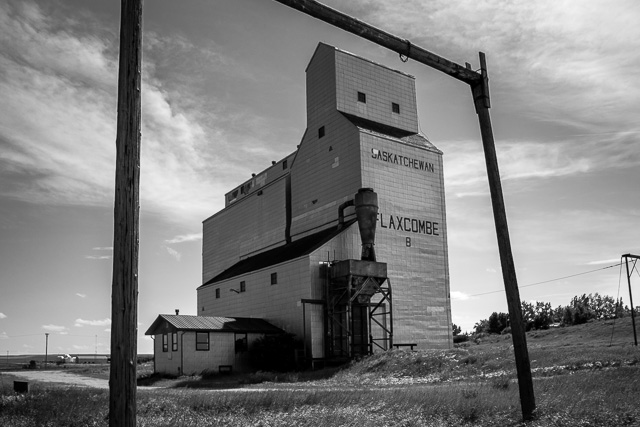
A lonely grain elevator in Flaxcombe Saskatchewan.
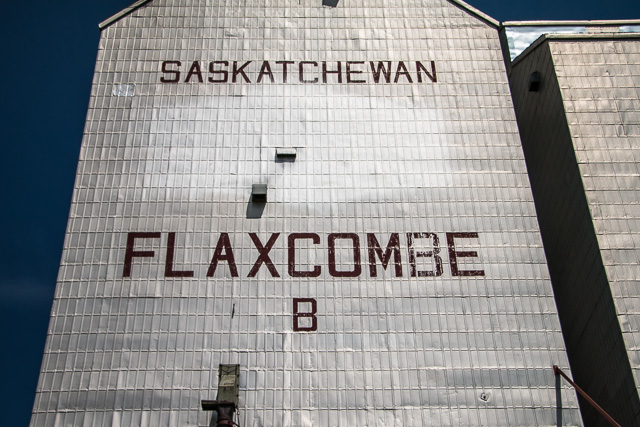
The town’s name was always displayed.
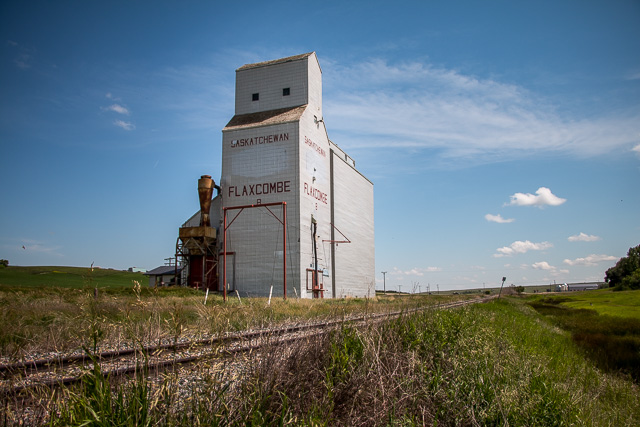
The main structure is from the 1950s, the annex behind, the 1980s.
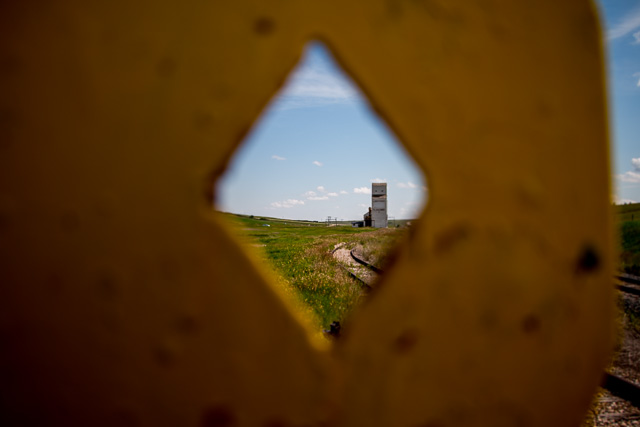
There used to be other grain elevators along the track here.
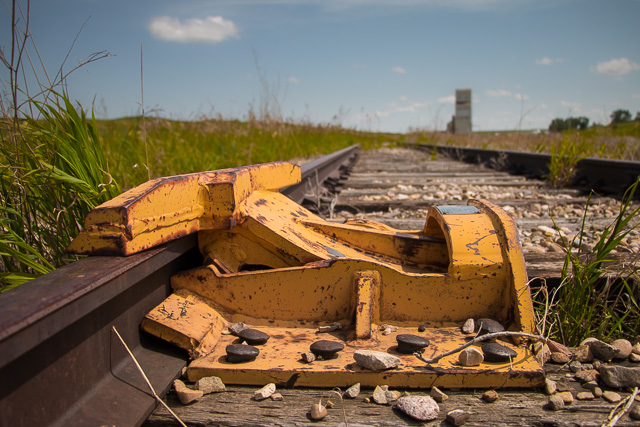
This “derail” stops runaway cars.
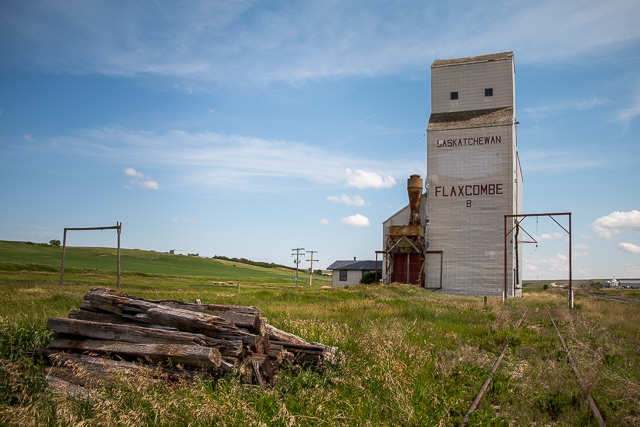
Ex Saskatchewan Pool, it’s been privately owned since the early 2000s.
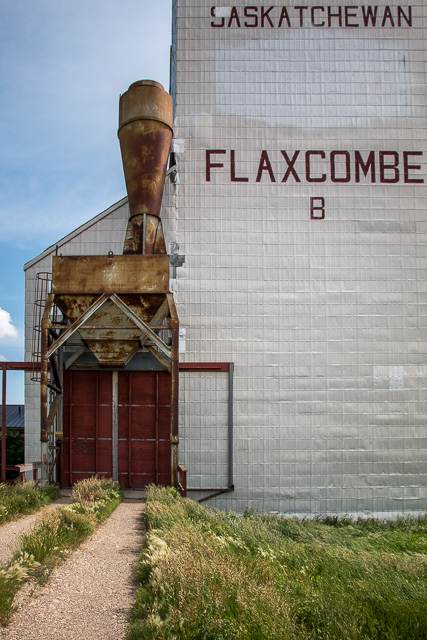
The B tells us the company had more than one facility in town.

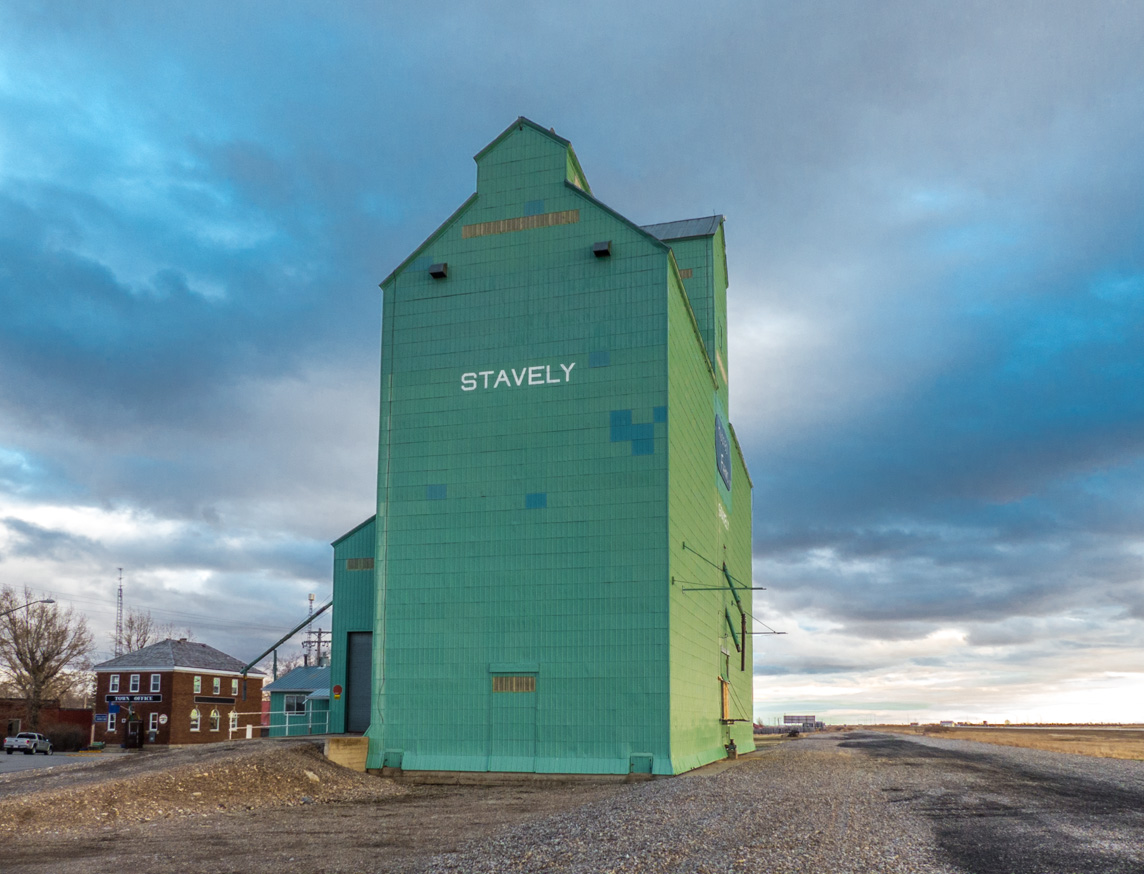
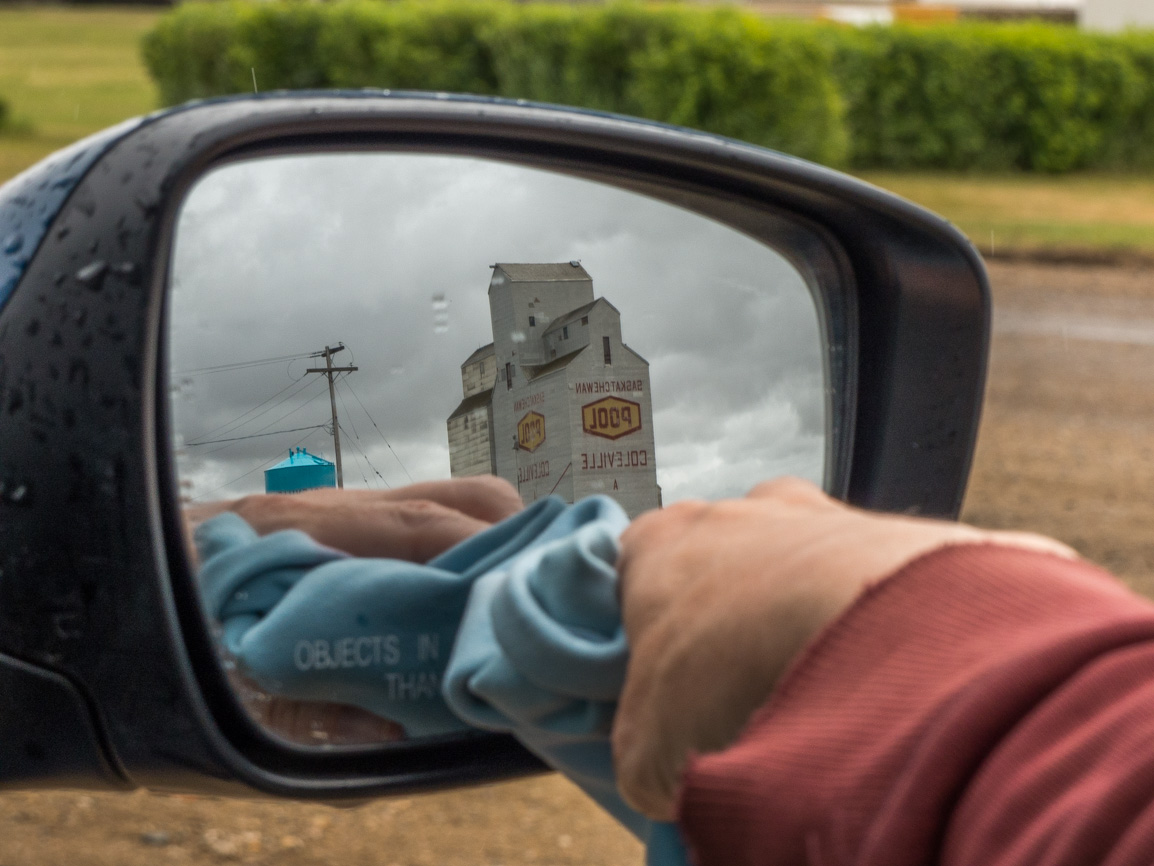
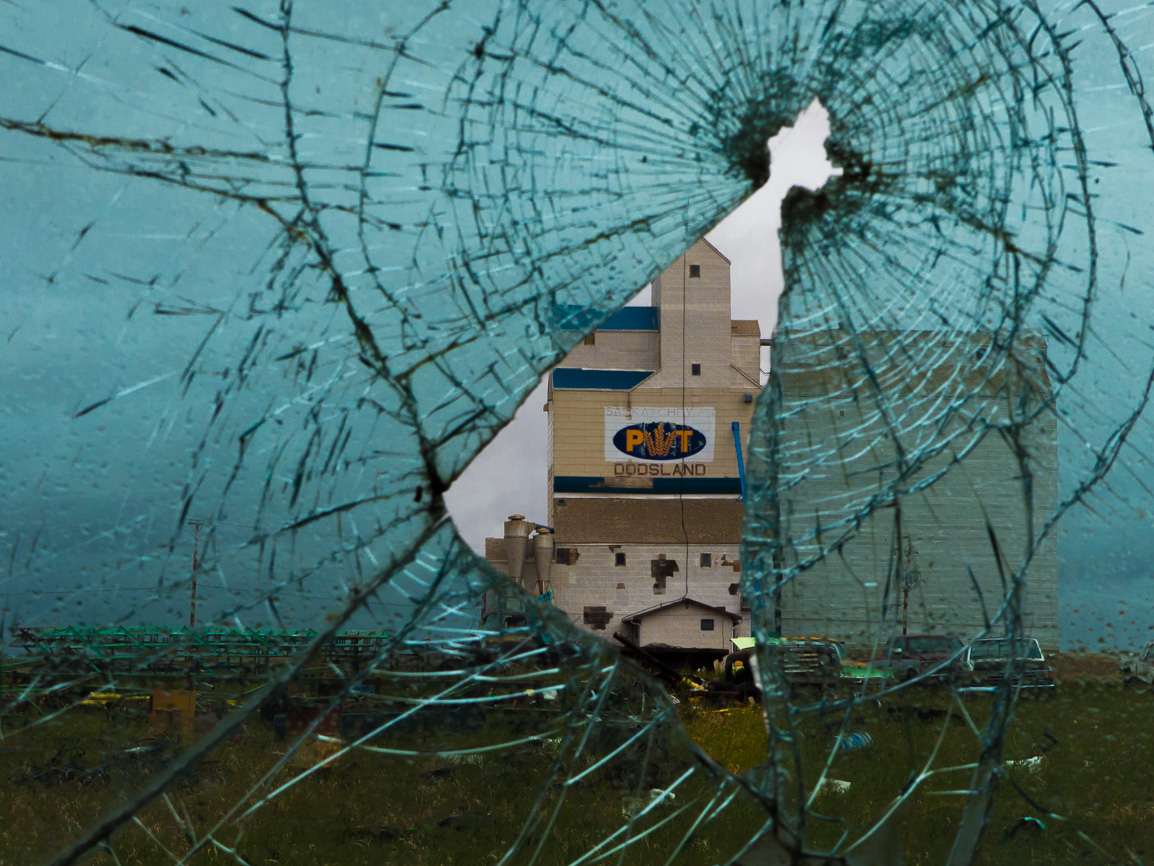
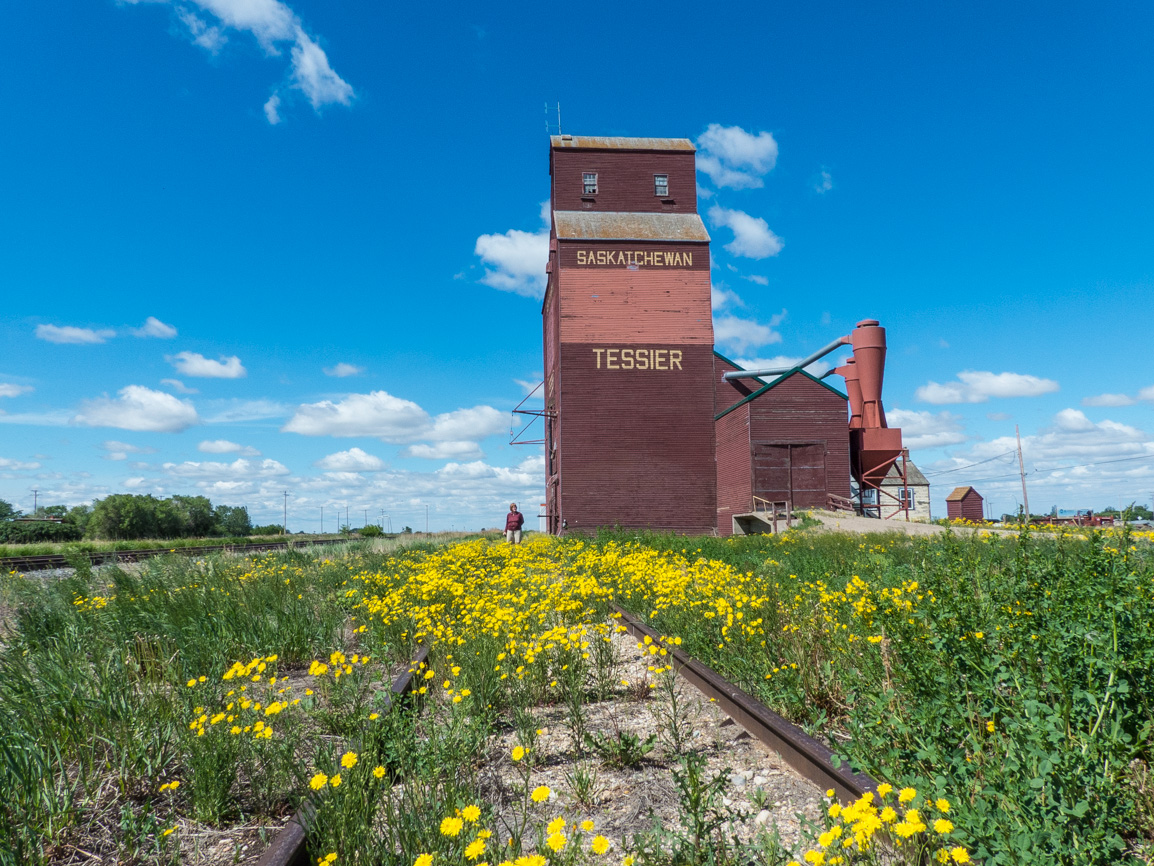
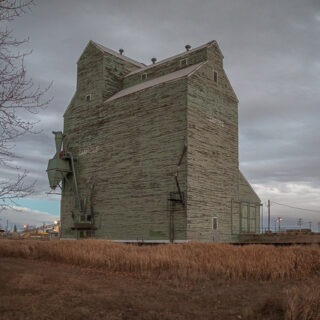
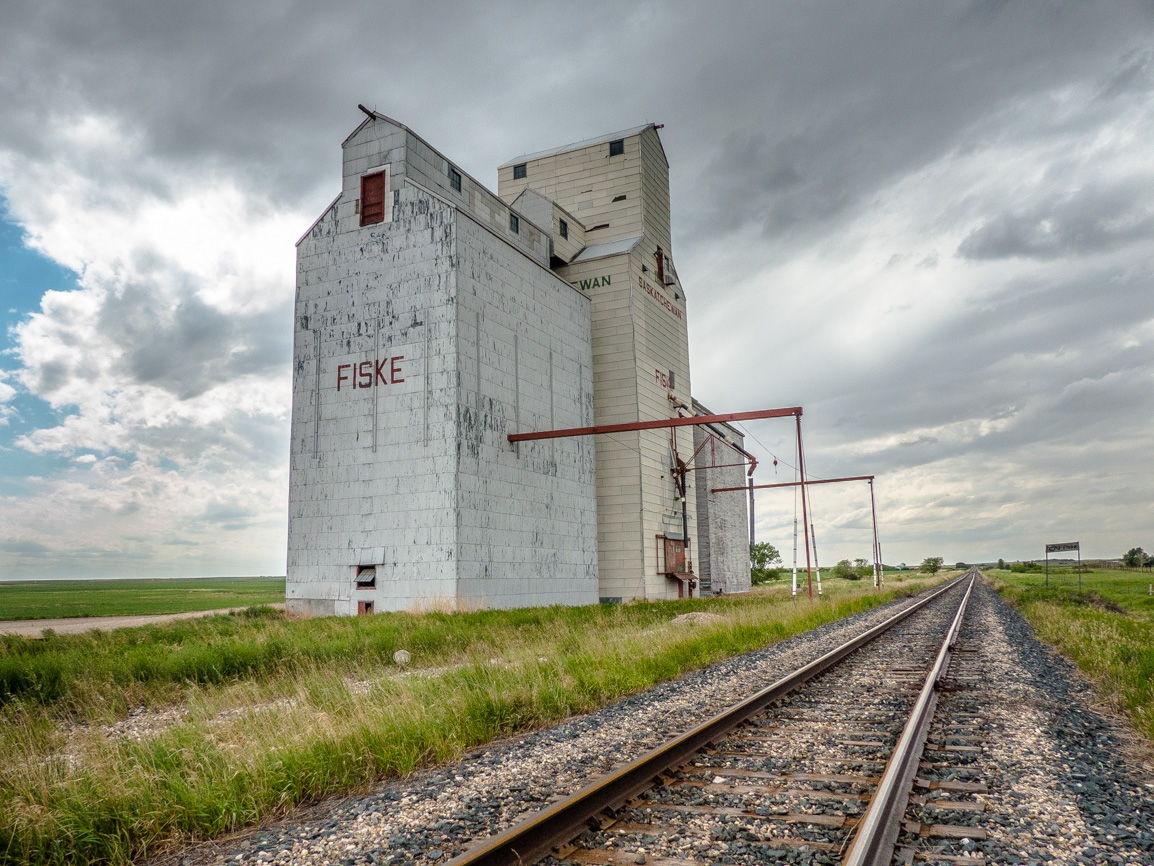
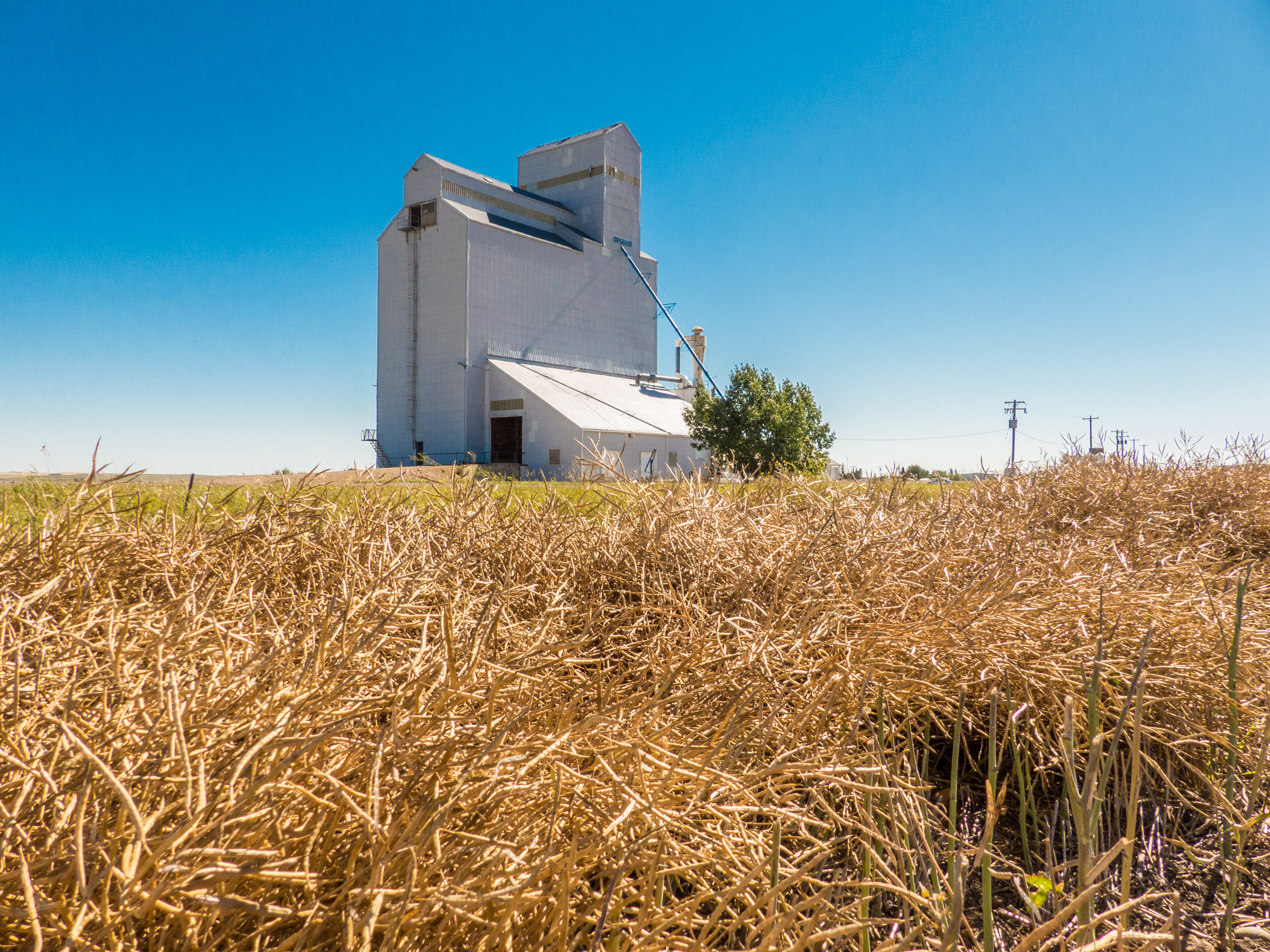
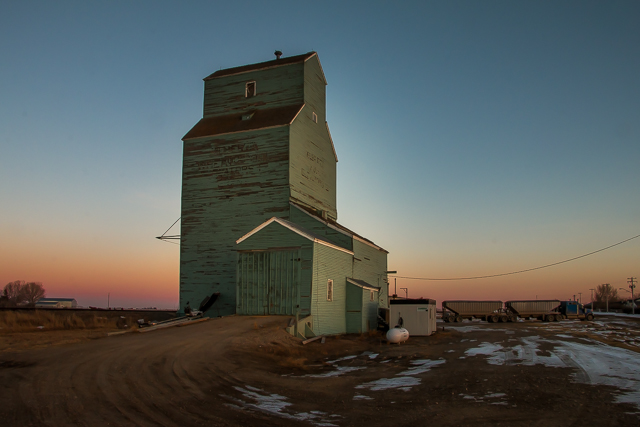
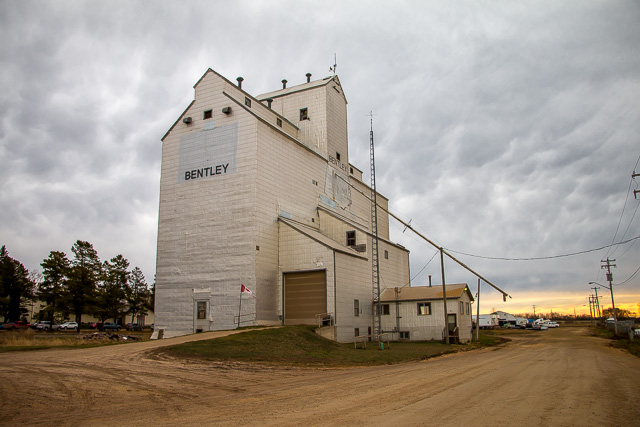
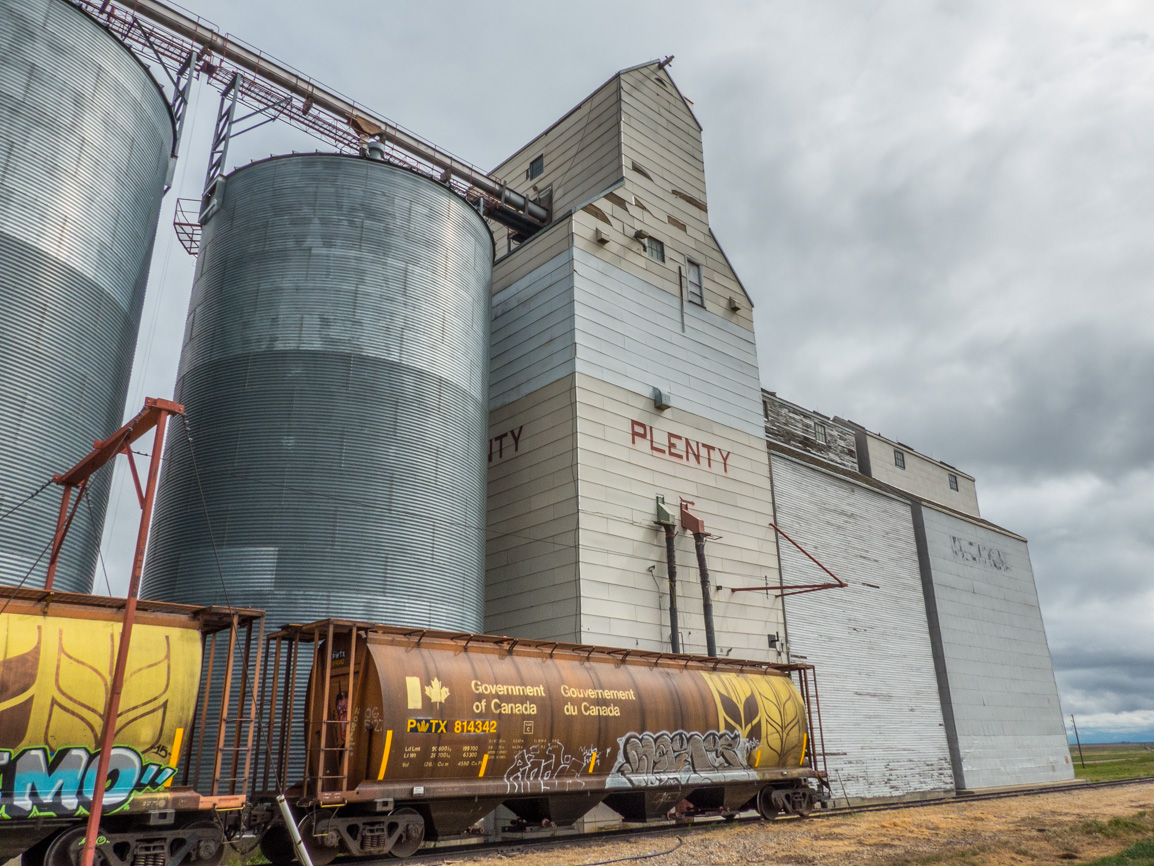
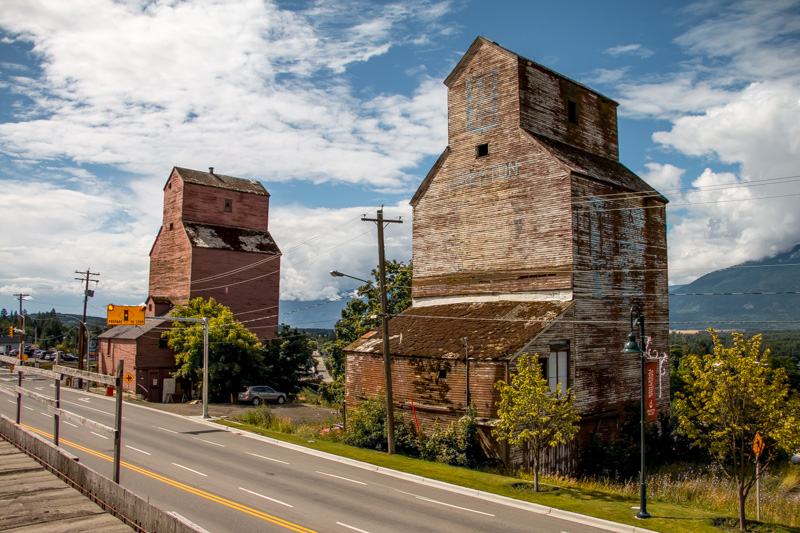
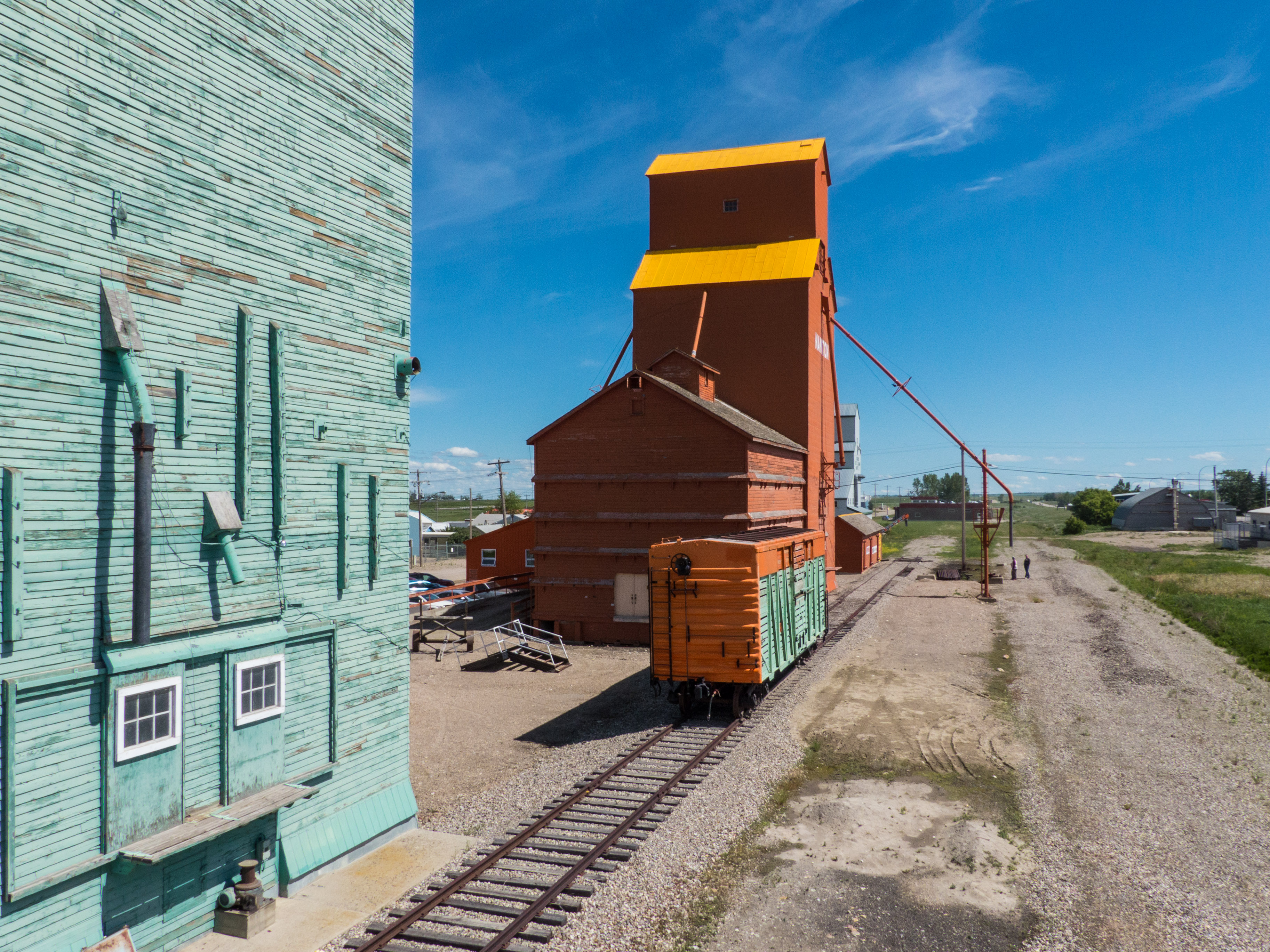
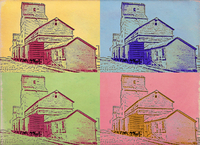






I just loaded Canola out of this Elevator!
So cool! Thanks for sharing.
My grandmother grew up in Flaxcombe! She went back a few years ago to visit her old house, just prior to passing.
Sorry to hear your loss. I often imagine what it’d be like to grow up in a small prairie town…
Every town had one. Vulcan, where I call home, had a huge row. Sad, so few left.
Vulcan’s was huge! It saddens us too.
Love your pictures! Keep coming back to Saskatchewan and shooting all our vanishing history.
We’ll take that invite! As long as there’s a breath in us, we’ll keep doing this.